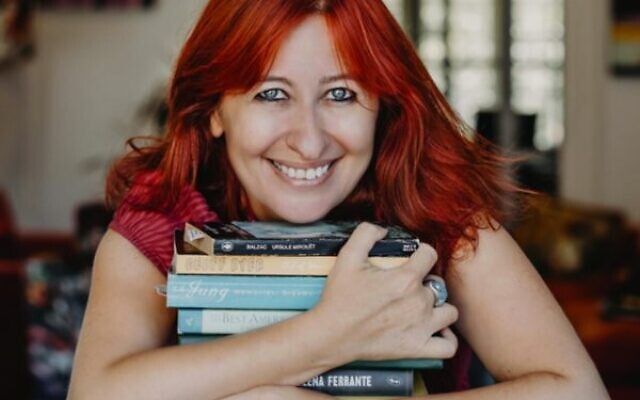The art of writing
Lee Kofman has published eight books in two different languages. She describes herself as a 'Russian-born Israeli-Australian author, writing teacher and mentor' and her latest book is an amalgamation of all these skills.
When Lee Kofman was six years old, she moved from Siberia to Odessa, where her home was a hub for Jewish dissidents. When she was 12, the family moved to Israel and then at the age of 26, she moved to Australia on her own. Suffice to say, she has very interesting stories to share. And as an author, writing teacher and mentor, sharing stories is exactly what she does.
Her first three books, written in Hebrew, are fiction, and the remaining five, all written in English, are in the creative non-fiction genre.
Her latest book, The Writer Laid Bare: Mastering emotional honesty in a writer’s art, craft and life was influenced by several factors, one of which was severe writer’s block in her early thirties.
“As both a practitioner and a teacher of creative writing, I’ve been interested in how the creative process works for a very long time. My interest has derived also from personal circumstances: the fact that I write in two languages – and neither is my mother tongue – and my experience of a severe four-years-long writer’s block in my early thirties,” she told The AJN.
“These difficulties also prompted me to take a close interest in what it takes to live a productive creative life.”
As she started to emerge from her writer’s block roughly a decade ago, Kofman decided the only way to inspire herself to keep going, was to write a blog about the difficulties and the joys of writing. The blog remains on her website today. It has also been the launchpad for other writers, with Kofman proudly explaining that a guest blogger received a publishing contract after a publisher read their post on her website.
In the same way, The Writer Laid Bare became a book.
“My publisher, who also reads my blog, noticed that it was going well and offered me a contract in 2020 to write a book based on my blog, which I gladly accepted,” she said.
For Kofman, The Writer Laid Bare is the book she wished she had in the four years she was suffering from writer’s block.
“I lost touch with my viscera then and stopped believing in myself as a writer,” she recalled. “I strongly suspect timely advice would have spared me those years of wallowing in despair. If only someone back then pointed out that my difficulties weren’t a sign that I couldn’t write; that struggling with authenticity, candour and self-understanding is something writers must do, often throughout their entire lives.”
Go beyond the meaning of words and notice their textures, sounds and rhythms. Trust language that it will lead you to where you need to go in your work.
The Writer Laid Bare makes sure readers understand this. Kofman also provides practical strategies to make writing easier.
“I explore many aspects of the writing practice – creative process, craft matters, motivation and inspiration, and how to live a life conducive to your art but not subsumed by it,” she explained.
There are three overarching and recurring messages throughout the book. First, that writing is meant to be difficult. Accepting this will make the process easier. Second, there is no right way to write, just an authentic way to write, and this is highly personal. And finally, creative writers need to look within themselves and study themselves – what makes them tick, how do they perceive the world? This is what will help them be authentic writers.
There was a lot of research that went into the book for Kofman, expanding on the research that she had been undertaking for years, simply for her private interest but also for her teaching.
“I used biographies and memoirs of writers, interviews with writers (particularly the amazing Paris Review interviews), other books on writing, and scientific studies of creativity – I was especially interested in what neuroscience has to say about how the creative brain works,” she said.
Kofman also credits the writers whose views and lives inspired her the most while writing The Writer Laid Bare. Specifically, she mentions Chekhov, Elena Ferrante, Amos Oz, David Grossman, Stephen King and Karl Ove Knausgaard.
As for some tips she can give to fellow writers, Kofman said it’s difficult to narrow them down. But she did come up with the goods, encouraging writers to: “write only what is truly urgent to you, read as widely and ambitiously as you can and do so analytically, and develop a sensual, intimate relationship to language.
“Go beyond the meaning of words and notice their textures, sounds and rhythms. Trust language that it will lead you to where you need to go in your work.”
From someone who doesn’t write in her mother tongue, it is some excellent advice.
The Writer Laid Bare is published by Ventura Press, $32.99 (rrp)


comments